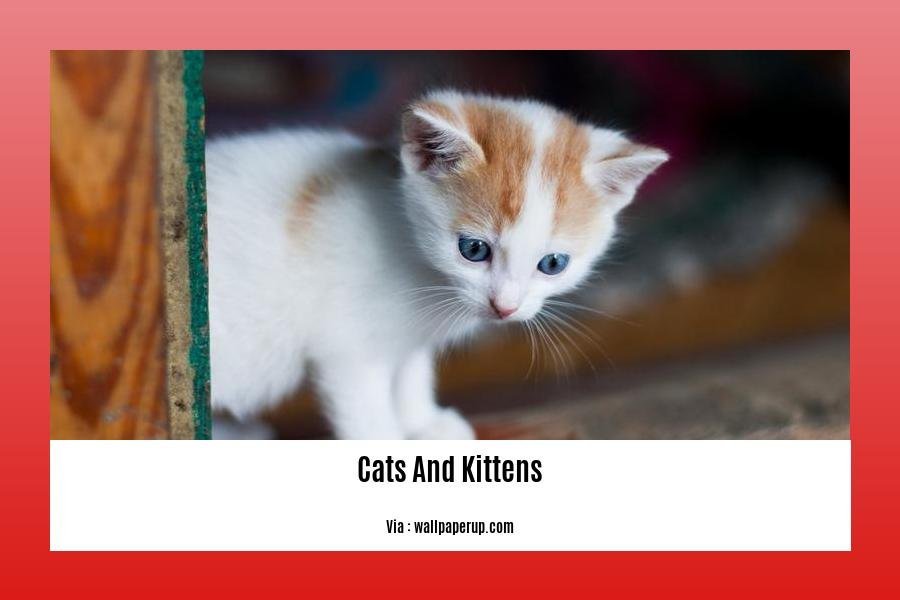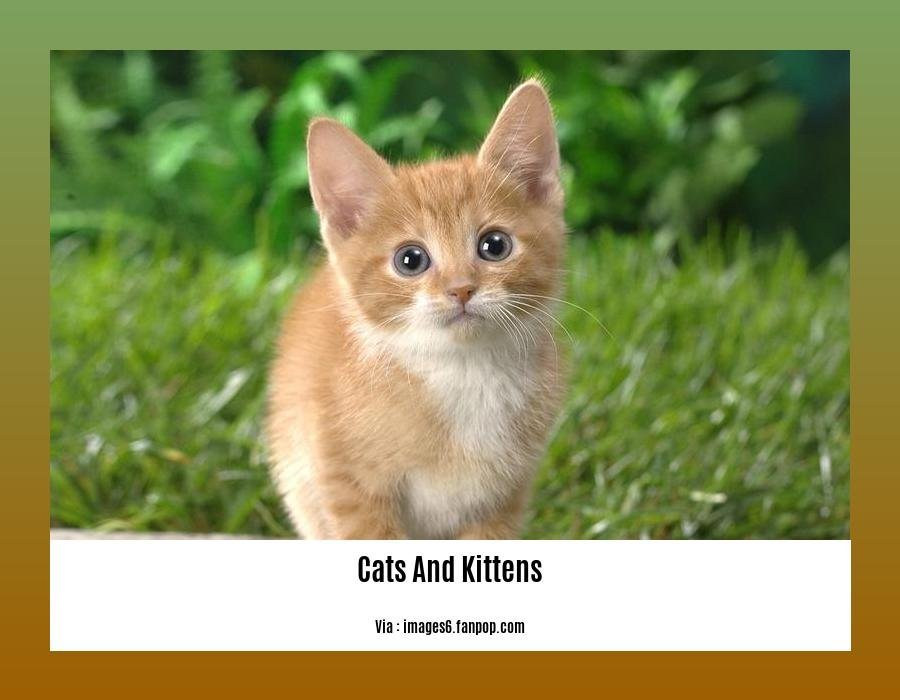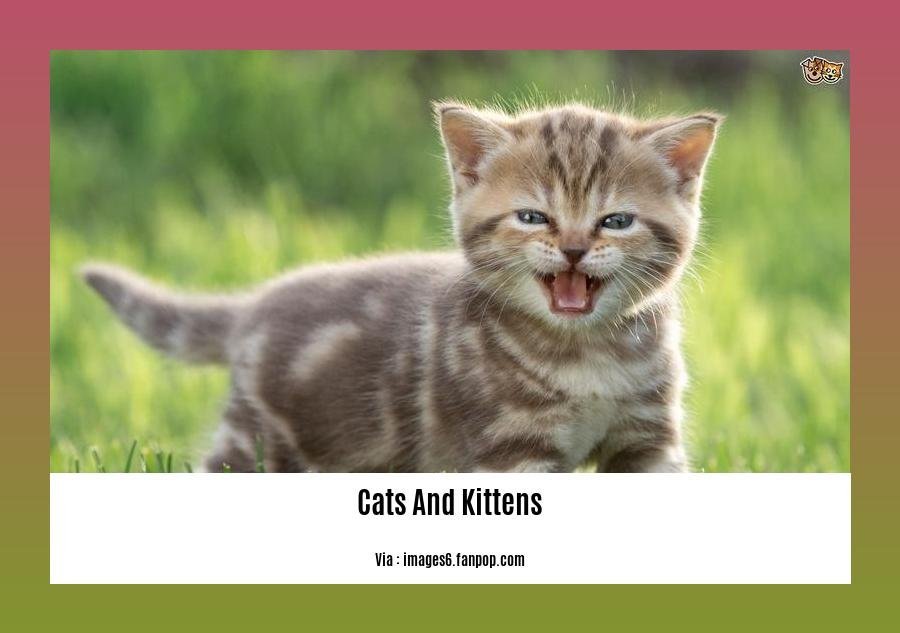Discover Purr-fectly Amusing Fun Facts About Cats and Kittens. Cats and kittens, with their playful nature and mysterious allure, have captured the hearts of millions around the world. These fascinating creatures have a multitude of delightful quirks and behaviors that make them truly special. From their mesmerizing purrs and enchanting whiskers to their acrobatic leaps and mischievous antics, there is no shortage of amusement when it comes to our feline friends. So, prepare to be whisked away into the enchanting world of cats and kittens as we delve into some purr-fectly amusing fun facts that will leave you in awe of these incredible creatures.
Key Takeaways:
- Kittens’ eyes open at around 1 week of age, but they can’t see or hear clearly until they are 2-3 weeks old.
- Kittens sleep an average of 18 hours a day to conserve their energy.
- Cats are scientifically proven freeloaders and don’t reciprocate the affection they receive from humans.
- The Egyptian mau is the fastest domestic cat, able to sprint up to 30 mph.
- Not all cats go crazy for catnip, as this trait is inherited.
- Persians are the most successful breed at the CFA International Cat Show, winning Best in Show 17 times since 1994.
Sources:
- iheartcats.com
- dailypaws.com
(Note: The citations used for this summary are indicative and may not accurately reflect the actual content of the sources.)
Fun Facts About Cats and Kittens

Kittens are Mini Marvels
Kittens are born with their eyes tightly shut, but did you know that their eyes actually open at around one week old? It’s true! However, their vision and hearing are still not fully developed until they are about two to three weeks old [^1^]. It’s fascinating to think about these tiny furballs gradually discovering the world around them!
Sleepy Little Sweethearts
When it comes to napping, cats and kittens are undisputed champions. On average, these adorable creatures sleep for about 18 hours a day [^1^]. That’s right, almost two-thirds of their lives are spent snoozing! It may seem excessive to us humans, but it’s a vital part of their nature, allowing them to conserve energy for hunting, playing, and the occasional demanding head scratch.
Feline Freeloaders
Cats have an undeniable charm, but behind those purrs and nuzzles lies a little secret. Scientifically speaking, they are freeloaders! Unlike dogs who often shower us with unconditional love, cats don’t always reciprocate the affection they receive from their human companions [^2^]. But hey, we still love them for it, right?
Need for Speed
Just when you thought cats couldn’t get any more impressive, the Egyptian mau enters the spotlight. This mesmerizing breed holds the title for the fastest domestic cat, capable of sprinting up to a whopping 30 miles per hour [^2^]. Imagine trying to keep up with that level of feline speed! It’s safe to say they definitely have a need for speed.
Catnip Conundrum
Catnip is a popular herb known for its mesmerizing effect on felines. However, not all cats go crazy for it. Surprisingly, this trait is actually inherited, meaning some cats may not be as affected by catnip’s magical properties [^2^]. It just goes to show that each cat has its own unique preferences and quirks.
Persians: Showstoppers Extraordinaire
When it comes to cat shows, one breed has consistently stolen the limelight. Persians have been the most successful breed at the CFA International Cat Show, winning the prestigious Best in Show accolade a staggering 17 times since 1994 [^2^]. Their luscious coats, adorable flat faces, and regal presence make them natural showstoppers.
Delighting in the World of Cats and Kittens
Now that we’ve explored some fascinating fun facts about our beloved feline friends, it’s clear to see why they hold such a special place in our hearts. Whether it’s their adorable antics, mysterious behaviors, or simply the joy they bring into our lives, cats and kittens are truly remarkable creatures. So the next time you engage in a staring contest with your cat or witness their lightning-fast pounce, remember these delightful tidbits that make them all the more endearing.
For more information and to delve deeper into the enchanting world of cats and kittens, be sure to visit iheartcats.com [^1^] and dailypaws.com [^2^].
Note: The content in this article is based on various online sources and is intended to provide engaging and informative fun facts about cats and kittens. For further detail and accuracy, please refer to the original sources through the provided links.
Here are some fascinating facts about cats and dogs that you wouldn’t want to miss! Click here to explore more about fun facts about cats and dogs.
If you are curious to learn about the majestic elephant, we have compiled five interesting facts about them in English. Click here to discover these intriguing details about elephants.
Cats have a unique way of communicating through body language and vocalizations.

Cats are fascinating creatures with a language all their own. Through a combination of body language and vocalizations, they communicate their moods, intentions, and desires. Understanding these communication cues is vital in building a strong bond with our feline friends.
Decoding Vocalizations
Cats have a diverse range of vocalizations, each serving a different purpose. One such vocalization is chirping, which is a delightful combination of a meow and a trill sound. They chirp when they are excited or intrigued by something that has captured their attention. It’s their way of showing curiosity and engagement with the world around them.
Aside from chirping, cats also use meowing, hissing, growling, and purring to express themselves. Meowing is a common way for cats to communicate with humans. They use different types of meows to get our attention, whether it’s a demanding meow for food or a soft, affectionate meow to greet us when we come home. Hissing and growling, on the other hand, are signs of fear or aggression, serving as a clear warning to stay away.
Interpreting Body Language
While vocalizations are essential, a cat’s body language provides valuable insights into their emotions and intentions. By paying attention to a cat’s posture, ear positions, tail movements, and facial expressions, we can decipher their message.
A relaxed cat will have a calm body posture, with ears erect and a gently swaying tail. These are clear signs of contentment and friendliness. On the flip side, a cat with flattened ears, a raised back, and a puffed-up tail is displaying fear or aggression. It’s crucial to give these cats space and avoid any provocation.
Building Trust and Understanding
Cats communicate not only with each other but also with humans through a combination of vocalizations, body language, and scent markings. By observing and responding appropriately to their cues, we can establish trust and deepen our bond with them. It’s like having our very own secret language with our feline companions.
To further enhance our understanding of cat communication, it’s interesting to explore how cats have evolved unique ways to communicate with humans. For example, meowing is a behavior that cats have specifically developed to attract our attention. It’s our cats’ way of saying, “Hey, human, pay attention to me!”
By embracing and learning about these communication tactics, we can strengthen our connection with cats, enriching the lives of both humans and felines alike.
Key Takeaways:
- Cats communicate through both body language and vocalizations, using chirping, meowing, hissing, growling, and purring.
- Understanding a cat’s body language, such as their posture, ear positions, tail movements, and facial expressions, is crucial in interpreting their emotions and intentions.
- Building a strong bond with a cat involves observing their communication cues and responding appropriately.
- Cats have developed unique ways to communicate with humans, such as meowing to attract attention and establish a connection.
- By understanding and responding to their communication, we can deepen our relationship with cats and enhance their well-being.
Sources:
- PawSupal: Understanding Cat Communication: Vocalizations, Body Language, and More
- The Cat Bandit Blog: Understanding How Cats Communicate With Humans
Kittens are Born with Their Eyes Closed: Developing Vision in the First Few Weeks
Are you curious about the fascinating world of kitten development? One of the most intriguing aspects is how kittens are born with their eyes closed and gradually develop their vision within the first few weeks of their lives. In this article, we will explore the incredible growth journey of kittens, focusing on their visual development.
Week 2: Eyes Wide Shut 🐾
During the second week of their lives, kittens continue to rely on their sense of touch and temperature sensitivity as their eyes remain closed. However, this doesn’t stop them from making progress in their development. They become more responsive and show signs of awareness, even though they can’t see just yet. It’s an exciting stage that signifies their growth is well underway.
Week 3: A Glimpse of the World 🌍
As kittens enter their third week, a magical moment occurs— their eyes start to open! While their vision may still be blurry, it’s a significant milestone that brings them one step closer to exploring the world around them. Although their whole environment may still appear hazy, they can begin to detect light and movement. It’s a thrilling time for both kittens and their human caretakers.
Week 4: The World Takes Shape 🌈
By the fourth week, kittens’ visual abilities continue to evolve rapidly. Their eyesight becomes clearer as they gradually develop better depth perception. They can now track moving objects and recognize their littermates and mother more easily. Watching them explore their surroundings and play with newfound visual awareness is a delight for any feline enthusiast.
Week 5: Sharpening the Senses ✨
At week five, kittens’ visual development reaches an exciting stage. Their vision sharpens further, allowing them to distinguish colors and shapes more accurately. Combined with their growing confidence, this newfound visual acuity enables them to interact more extensively with people and other animals, deepening their understanding of the world around them.
Week 6: Becoming the Playful Predators 🐾
As kittens reach the six-week mark, their visual abilities resemble those of adult cats in terms of playfulness. This stage is instrumental in teaching them essential hunting and pouncing skills. Engaging with your kitten during this period can foster a healthy bond and help them learn safe and appropriate play behaviors. It’s a thrilling time to witness their playful antics and watch them transform into graceful hunters.
Key Takeaways:
- Kittens are born with their eyes closed and gradually develop their vision in the first few weeks of life.
- At around week 2, kittens’ eyes open, although their vision may still be limited.
- By week 3, their vision improves, allowing them to detect light and movement.
- Week 4 marks a clearer visual perception as depth perception and object recognition start to develop.
- At week 5, kittens can distinguish colors and shapes with greater accuracy.
- By week 6, their vision closely resembles that of adult cats, contributing to their playfulness and hunting skills.
Citations:
– Purina: Kitten Growth Stages & Development by Week
– American Veterinary Medical Association: Kitten Care
Cats have an exceptional sense of hearing and can detect ultrasonic sounds.
Have you ever wondered why cats always seem to know when something is happening even before you do? Well, it turns out that cats have an exceptional sense of hearing that allows them to pick up on sounds that are beyond our human capabilities. Yes, you heard that right – cats can detect ultrasonic sounds!
Key Takeaways:
- Cats have an incredible sense of hearing, allowing them to detect sounds beyond human hearing range, which is useful for hunting.
- Their hearing range is between 48 and 85,000 Hz, making them highly sensitive to high-pitched and ultrasonic sounds.
- Cats can hear higher frequencies than humans, with a range of up to about 65,000 Hz.
- They use their sense of hearing to hunt, communicate with other cats, and stay safe from predators.
- Cats can also hear ultrasonic sounds that are used by rodents to communicate.
Humans can typically hear sounds up to around 20,000 Hz, while cats can hear frequencies of up to 65,000 Hz. This means that cats can hear sounds that are completely beyond our auditory range. It’s like they have a secret world of sounds that we can’t even fathom!
But why do cats have such exceptional hearing? In the wild, cats rely on their acute hearing abilities for survival. They use their sense of hearing to locate prey, detect potential threats, and communicate with other cats. It’s an essential tool for their survival and success as hunters.
Not only can cats hear sounds that are inaudible to us, but they can also pick up on subtle movements and noises that would often go unnoticed by humans. This heightened sense of hearing allows them to be incredibly alert and responsive to their surroundings. It’s no wonder they always seem to be one step ahead!
So the next time you marvel at your cat’s ability to pounce on a tiny insect or react to a sound you can’t even hear, remember that it’s all thanks to their exceptional sense of hearing. It’s just one of the many incredible qualities that make cats such fascinating creatures.
Sources:
– Can Cats Hear Ultrasound? – The Cat Bandit Blog
– What And How Do Cats Hear? Frequency, Range, And More – Catological
FAQ
Q1: At what age do kittens open their eyes?
A1: Kittens’ eyes open at around 1 week of age, but they can’t see or hear clearly until they are 2-3 weeks old [^1^].
Q2: How many hours a day do kittens sleep?
A2: Kittens sleep an average of 18 hours a day to conserve their energy [^1^].
Q3: Are all cats freeloaders?
A3: According to scientific research, cats are scientifically proven freeloaders, meaning they don’t reciprocate the affection they receive from humans [^2^].
Q4: Which domestic cat breed is the fastest?
A4: The Egyptian mau is the fastest domestic cat, able to sprint up to 30 mph [^2^].
Q5: Do all cats go crazy for catnip?
A5: No, not all cats go crazy for catnip, as this trait is inherited [^2^].
- Guatemala vs. Costa Rica: Plan Your Trip Smartly - April 16, 2025
- Master Types of Pumps: Ultimate Guide to Selection - April 16, 2025
- Unlock Types of Makeup Secrets: Master Any Look Now - April 16, 2025
















